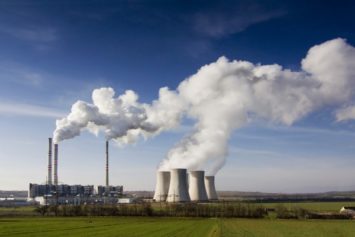Over the last several months, the U.S. Department of Energy (DOE) has taken two actions intended to ensure that coal-fired power plants continue to comprise a substantial portion of the nation’s energy portfolio. In December 2018, the DOE’s Office of Fossil Energy (FE) issued a request for proposal (RFP) seeking “conceptual designs for coal-based power plants of the future.” The DOE followed the RFP with a Funding Opportunity Announcement (FOA) that will provide up to $38 million in federal dollars for “cost-shared research and development (R&D) projects enhancing technologies that improve the overall performance, reliability, and flexibility of the nation’s existing coal-fired power plant fleet.”

On the same day the DOE published its FOA, the National Mining Association (NMA) released a new report on the benefits of high-efficiency, low-emission (HELE) coal-fired power plants. According to the NMA, HELE is a key first step along a pathway to near-zero emissions from coal with carbon capture, use, and storage (CCUS). “While much of the dialogue surrounding the need for emissions reductions focuses on technologies that do not yet exist, or solutions that the U.S. power grid is not currently capable of supporting, high efficiency, low emissions coal technologies exist today that could considerably reduce emissions,” states the NMA.
The two DOE actions are part of the Department’s Coal FIRST (Flexible, Innovative, Resilient, Small, Transformative) initiative. Announced in November 2018, the objective of Coal FIRST is to advance coal-fired power plants that are capable of flexible operations to meet the needs of the grid; use innovative and cutting-edge components that improve efficiency and reduce emissions; provide resilient power to Americans; are small compared to today’s conventional utility-scale coal plants; and will transform how coal technologies are designed and manufactured.
RFP
The RFP, which closed January 15, 2019, noted that the wide-scale retirement of the existing fleet of coal-fired power plants—without replacement—may lead to a significant undermining of the reliability of America’s electricity supply. “Nevertheless, the need for considerable dispatchable generation, critical ancillary services, and grid reliability, combined with potentially higher future natural gas prices, and energy security concerns, such as the importance of onsite fuel availability during extreme weather events, create the opportunity for advanced coal-fired generation, for both domestic and international deployment,” said the DOE, which added that deployment of new coal plants will require a different way of thinking. To that end, the DOE said it envisioned that the future coal fleet may be based on electricity generating units possessing the following traits:
- High overall plant efficiency (40 percent higher heating value (HHV) or higher at full load, with minimal reductions in efficiency over the required generation range;
- Small (unit sizes of approximately 50 MW to 350 MW), maximizing the benefits of high-quality, low-cost shop fabrication to minimize field construction costs and project cycle time;
- Near-zero emissions, with options to consider plant designs that inherently emit lower amounts of carbon dioxide (amounts that are approaching those of comparable natural gas technologies) or could be retrofitted with carbon capture without significant plant modifications;
- Capable of high ramp rates and minimum loads;
- Integration with thermal or other energy storage (e.g., chemical production) to ease intermittency inefficiencies and equipment damage;
- Minimized water consumption;
- Reduced design, construction, and commissioning schedules from conventional norms by leveraging techniques including but not limited to advanced process engineering and parametric design methods for modular design;
- Enhanced maintenance features, including technology advances with monitoring and diagnostics to reduce maintenance and minimize forced outages;
- Integration with coal upgrading or other plant value streams (e.g., co-production); and
- Capable of natural gas co-firing.
More information on the RFP is here.
Funding
The DOE indicated that the FOA would be used to build upon designs submitted in response to the RFP, with the objective of supporting and culminating in the design, construction, and operation of one or more pilot-scale plants to test the salient highest-risk aspects of advanced commercial coal power plant concepts.
The FOA had three specific areas of interest:
- Sensors, diagnostics, and controls to improve prediction, performance, and reliability. The desired work scope would comprise both high-fidelity field testing of technologies and relevant environment testing of technologies.
- Power plant component improvement, which also comprises high-fidelity field testing of technologies and relevant environment testing of technologies.
- Data analytics-driven controls, which cover adaptive data-driven approaches featuring physics-based attributes for improved flexibility, reliability, and performance and artificial intelligence for enhanced data analytics and control of coal-based power plants.
More information on the FOA is available here.
NMA’s Report
The NMA report sought to compare the installed capacity of HELE plants in the United States against that in other countries. Additional objectives were to identify lessons learned from other nations about what it takes to foster the development of HELE plants and realistic scenarios for the pace of development of HELE plants in the United States in light of the experience of other countries.
The report also includes the results of polling to determine public attitudes toward advanced coal technologies. According to the NMA, 67 percent of voters support an all-of-the-above energy strategy that includes coal; 81 percent believe it is important to maintain America’s diverse energy mix—including coal— to preserve the affordability of electricity costs in the United States; and 67 percent believe the United States should prioritize investment in HELE coal plants.
The report is here.
